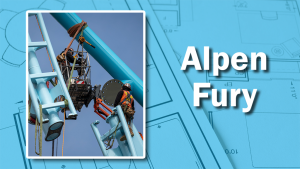According to the provincial government, B.C. will need to fill about 59,000 jobs in the construction industry trades over the next decade, due to our economic growth and current workers aging into retirement. Women are showing an increasing level of interest in these jobs and completing apprenticeship programs, but are not staying in the jobs once they find them. The retention rates for tradeswomen are low, and employers can do better.
There are many challenges for women to overcome when they enter the construction industry. While education and apprenticeships fill some of the knowledge gap, women who are interested in the construction trade can have limited opportunities to develop their competence and expand their skills in environments where their professional ambitions are taken seriously. Bullying and harassment presents another barrier to their success in the workplace. Although many industry representatives do not see problems of gender-based harassment, numerous incidents have been described by tradeswomen (State of Women in Construction in Canada report, 2010) in official complaints as well as through surveys and focus group reports.
Workplaces where bullying occurs can experience higher turnover and absenteeism, lower morale and productivity, and a poor safety record. Ultimately, a company with a reputation for this kind of culture may find it harder to attract and keep good workers. When workers are subjected to bullying and harassment they may develop anxiety and depression and have trouble concentrating. In some extreme cases, bullying and harassment has been recognized as a contributing factor of suicide. Women, as well as new workers and visible minorities are often the targets of this behavior, but it can affect anyone who is singled out as a target.
Mary-Jaye Salmon and Lindy Monahan, occupational safety officers with WorkSafeBC, say that they receive many more informal inquiries than formal complaints, and report that women talk about being afraid to “rock the boat,” or make official complaints about other workers. Instead, they ask the safety officers if certain types of worksite behavior are “normal,” if they should just learn to “deal with it,” and ask for details about what defines bullying and harassment under legislation. The women also tell the officers of situations where, even with years of experience, they are still having their knowledge questioned. Some don’t feel welcome at work, some even feel unsafe. In spite of this, the women want to stay in the jobs they worked hard to be hired for. They want education and strategies to enable them to deal with bullying and harassment, and to expand their opportunities for mentorship and promotion. Many employers are making similar requests, and for the majority of constructions crews it can be a serious challenge to create effective policies and practices and to enforce them consistently.
A new project launched this summer by the British Columbia Construction Association (BCCA), in partnership with numerous industry stakeholders, promises practical solutions for both workers and employers. Called the Construction Workforce Equity Project, it combines the resources and expertise of BCCA, Industry Training Authority, WorkSafeBC, BC Construction Safety Alliance, BCCA Employee Benefits Trust, LNG Canada, Minerva Foundation of BC, Vancouver Island Construction Association, Northern Regional Construction Association, Vancouver Construction Association, Southern Interior Construction Association, and Women Building Futures. The stakeholders are developing resources and programs with the proposed implementation date of 2020, including:
A virtual HR team to assist employers in:
- creating appropriate policies and procedures
- managing escalating situations on site
- specific training for the construction culture
- an “Equity Score Card” to acknowledge exemplary employers
- online resources and information to tradeswomen looking for support or career development
In addition to increasing hiring and retention of women; the goals of the project are to create widespread acceptance of equity policies; encourage employers and supervisors and to enforce the policies and practices and set a “zero tolerance” for those who do not follow them. The partners in the project recognize that equal and fair treatment of workers leads to a safer and more productive workplace.
Communication and education and training are necessary for creating a workplace that offers equal opportunities and recognition to everyone.
For resources on bullying and harassment policies, education, and prevention, see www.worksafebc.com/preventbullying.











Recent Comments
comments for this post are closed